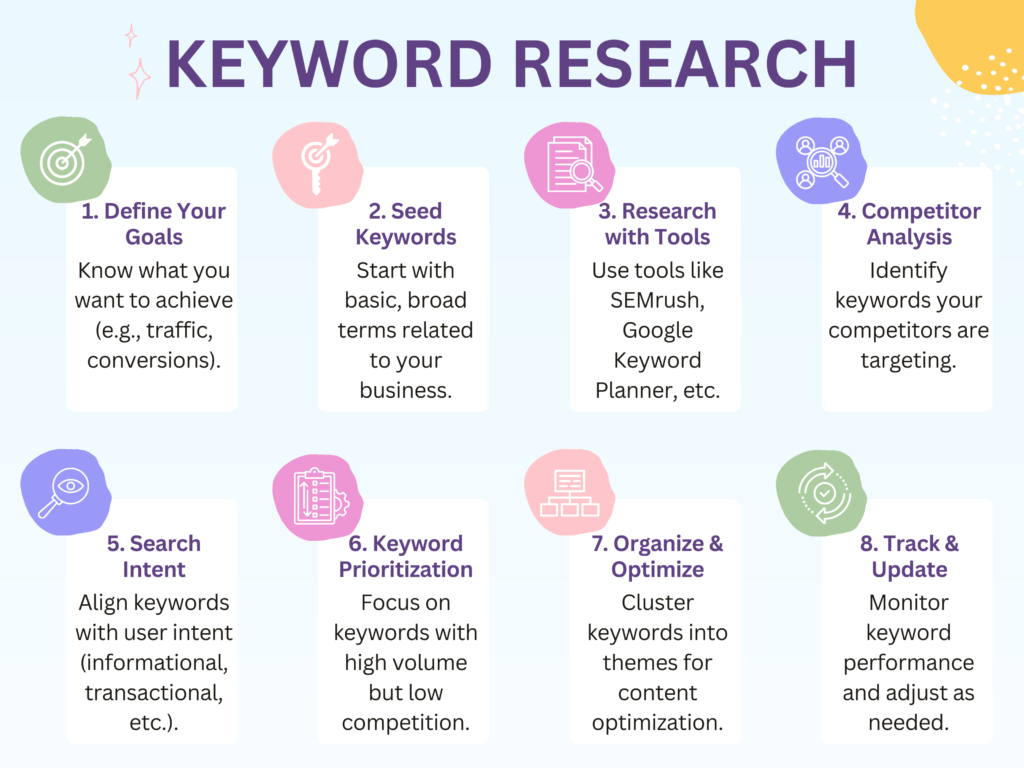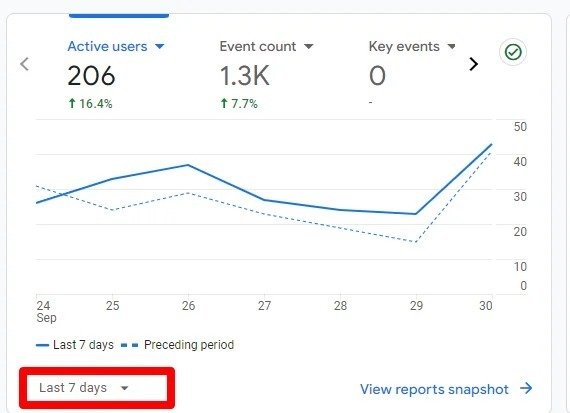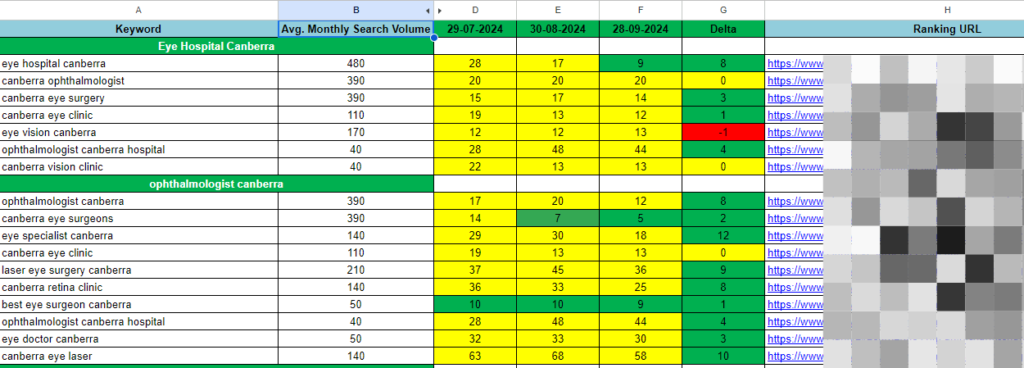+120% Search Traffic
Campaign Challenges:
- No online visibility.
- Credibility issues.
- Lack of patient education.
Campaign Results:
+120%
Organic Traffic
22
Top 10 Positions
Background
In Canberra, a team of skilled eye surgeons recognized a pressing need for a digital identity. Despite their advanced surgical procedures and commitment to patient care, the absence of a website left them largely invisible to potential patients. With a growing trend of individuals seeking healthcare options online, they realized that establishing an online presence was not just beneficial—it was essential. This case study explores the comprehensive strategies employed to develop a robust digital footprint, improve visibility, and enhance patient engagement.

The Challenges

No online visibility
The practice’s lack of a website meant they could not attract new patients effectively. Without an online platform, they missed out on numerous opportunities for consultations and treatments.

Credibility issues
In a competitive healthcare market, potential patients often research providers before making decisions. The absence of a digital footprint hindered the practice’s ability to build trust and credibility.

Patient education
Many potential patients were unaware of the eye care procedures available to them. A platform was needed to educate them effectively, fostering informed decision-making.
Strategies & Implementation
A user-friendly website was created, SEO strategies were applied to boost visibility, and local SEO efforts were implemented. Regular content updates and collaborations with local GPs enhanced patient education and engagement. Security and performance tools ensured a seamless user experience.
Website development
Objectives: Create a user-friendly, informative website that showcases the practice’s expertise, promotes services, and provides valuable educational resources to patients. To enhance accessibility and usability, the website incorporates a font resizer feature. This allows users to easily adjust the text size according to their preferences, ensuring that individuals with varying visual abilities can comfortably navigate and read the content.
This thoughtful design choice not only improves user experience but also demonstrates our commitment to inclusivity, making essential eye health information accessible to all patients. By achieving these objectives, we aim to foster trust, encourage engagement, and ultimately drive more referrals to our practice.
Pages created:
- Home page: The home page offers a visually engaging overview of the practice, highlighting its commitment to quality care and a range of services. It includes essential sections such as information about the clinic, a list of eye conditions treated, introductions to the team, the latest news and blog posts, local FAQs, and details on accreditations. This well-rounded content aims to build trust and inform patients about the practice’s offerings and expertise.
- Doctors page: This page showcases the qualifications and expertise of the medical team. Featuring professional biographies and photos, it helps to humanize the practice and allows patients to feel more connected to their potential care providers, fostering trust and reassurance.
- Staff page: Highlighting the support staff is essential for portraying a comprehensive view of the practice. This page can introduce administrative and clinical team members, emphasizing their roles in ensuring a positive patient experience and operational efficiency.
- Services page: Detailed descriptions of key procedures, including:
- Cataract surgery
- Strabismus surgery
- Paediatric surgery
- Eye Injections
- Blog page: Regularly updated articles covering a range of topics related to eye health and surgery insights, designed to engage the community and boost SEO.
- Contact us page: Streamlined access to contact information and location details
Technology used:
- WordPress: Chosen for its flexibility and ease of use, allowing for future updates without extensive technical knowledge.
- Elementor page builder: For custom page designs, ensuring a visually appealing layout.
- Rank Math: A powerful SEO plugin that helps with optimizing on-page content, managing meta tags, and tracking keyword rankings, all while ensuring the website remains SEO-friendly.
- NitroPack: Implemented to enhance website performance and page load speeds by optimizing caching, compressing files, and improving overall site performance for better user experience and search engine rankings.
- Wordfence: A robust security plugin installed to protect the website from malware, hackers, and potential security breaches, ensuring data integrity and maintaining user trust.
After the website was designed, the practice sought to optimize it for better online visibility and performance. They focused on enhancing the website’s technical aspects and content structure to ensure it could rank well in search engines and provide a seamless experience for users.
This included efforts to improve SEO, site speed, mobile responsiveness, and overall usability. By refining these elements, they aimed to attract more traffic and engage potential patients more effectively.
Keyword research & SEO optimization

Targeted keywords: To improve search engine visibility, the following keywords group were identified and many more:
- Cataract doctor + {location}
- Eye muscle surgeon + {location}
- Eye hospital + {location}
- Ophthalmologist + {location}
SEO strategies:
Targeted keywords were strategically integrated into page titles, headings, and meta descriptions to boost visibility on search engine results pages (SERPs). These optimizations ensured that search engines could easily understand the content of each page, improving the practice’s chances of ranking higher for relevant searches.
- Title tags & Meta descriptions: We refined all title tags and meta descriptions to accurately represent the content of each page while integrating targeted keywords. This approach improved click-through rates from search engine results.
- Image optimization: The images on the website were enhanced by using descriptive alt text and relevant file names, thereby boosting accessibility and search engine visibility.
Content optimization using Surfer SEO
Surfer SEO played a pivotal role in analyzing the website’s content and providing data-driven suggestions to optimize it further. This included:
- Keyword suggestions: Surfer SEO identified the most relevant keywords based on competitor analysis and search volume data, ensuring the website’s content aligned with high-ranking search terms. For example, it suggested keywords like “Cataract surgery in Canberra” and “Paediatric eye care clinic” to target specific services and local patient searches.
- Internal linking strategy: Surfer SEO also highlighted the importance of internal linking to improve user navigation and SEO. By linking related pages, such as connecting blog posts on eye care tips to procedure descriptions, the site enhanced user experience and search engine crawlability.
- Content structure: The tool provided recommendations on word count, use of headings, and keyword density to ensure that each page was optimized not just for keywords but for overall readability and engagement.
Topical authority & Content clusters

Objectives: Establish the practice as a trusted authority in eye care by creating comprehensive content clusters around key topics related to eye health and surgery.
Key strategies:
- Content clusters: Developed a series of interlinked articles to provide comprehensive information on specific topics, such as:
- Cataract surgery: Articles discussing pre-operative assessments, lens options, recovery tips, etc.
- Strabismus treatments: Guides detailing symptoms, surgical options, and post-operative care.
- Paediatric eye care: Educational resources for parents on common pediatric eye conditions and available treatments.
- Cataract surgery: Articles discussing pre-operative assessments, lens options, recovery tips, etc.
- Internal linking: A strong internal linking strategy was implemented to improve both navigation and SEO. This included:

Navigational internal linking
Added clear links to guide users between main sections such as services, blog posts, and contact information, enhancing user experience.

Contextual internal linking
Incorporated links within the text to guide users to related articles. For instance, a blog post on cataract surgery would link to other relevant posts like recovery tips or patient testimonials.

Related blogs
Displayed related blog posts at the end of each article to encourage users to explore more content and increase on-site engagement.
- Regular updates: A schedule was set up for periodic reviews and updates to all content, ensuring that information remains accurate and up-to-date, thereby maintaining the practice’s reputation for expertise and reliability.
Objectives: Ensure the website is easily crawlable and indexable by search engines, enhancing overall visibility and performance.
- Key strategies:

Site structure optimization
Developed a clear and organized site hierarchy to improve accessibility.

XML sitemap creation
Generated an XML sitemap for prompt indexing.

Robots.txt file configuration
Guided search engines on which pages to crawl.

Mobile optimization
Implemented responsive design principles for seamless functioning across devices.

Page speed optimization
Used Google PageSpeed Insights to enhance load speeds.

Schema markup
Implemented structured data for better search results.
Content creation
Informative blog posts: Regularly published articles addressing common patient queries, designed to engage visitors and improve SEO. Sample topics included:
- What to expect during cataract surgery?
- Understanding strabismus symptoms, causes, diagnosis and treatments.
- Eye care tips for healthy vision.
Tools used:
- Surfer SEO: Played a key role in optimizing content for search engines. This tool provided comprehensive keyword suggestions, recommended optimal content length, and guided internal linking strategies, including navigational and contextual links. Surfer’s recommendations for keyword density, phrase usage, and topic relevance helped to align the content closely with high-ranking search terms and improve overall SEO performance.
- Grammarly: Ensured all content was polished and error-free.
- Canva: Created visually appealing graphics and infographics to accompany blog posts and enhance reader engagement.
Collaboration with GPs and Optometrists
The website’s content, like blogs, are actively shared with local general practitioners and optometrists, enhancing their knowledge of the available procedures. This ongoing initiative is expected to contribute to a marked increase in referrals to the practice as more patients become informed about the services offered.
Local SEO & Google My Business setup
Profile creation:
- Established a Google My Business account with accurate and detailed information, including:
- Practice name: [Practice Name]
- Address: [Practice Address]
- Phone number: [Contact Number]
- Hours of operation: Clearly listed for patient convenience.
- To create a welcoming atmosphere for potential patients, we have uploaded high-quality images showcasing the practice environment and team members.
Regular posts:
- Utilized the posting feature on Google My Business to share timely updates, such as:
- New services: Announcements of any new procedures or treatments available.
- Health tips: Educational posts about eye health to engage the community and position the practice as a trusted resource.
- New services: Announcements of any new procedures or treatments available.
Directory listings:
In addition to setting up our Google My Business profile, we are also focusing on a directory listing strategy to maximize our local SEO efforts. This strategy includes three types of directories:

Navigational directories
These help patients find local services easily. Examples include Yelp and MapQuest. They provide essential information such as location, contact details, and user reviews, enhancing the practice’s discoverability.

Industrial directories
Targeting specific industries is vital for connecting with potential patients seeking specialized care. Directories like Healthgrades and Vitals cater specifically to healthcare providers and offer detailed profiles, including patient ratings and insurance information.

Generic directories
These are broader platforms that can also drive traffic to our website. Examples include Yellow Pages and Bing Places. While they may not be specialized, they offer additional visibility and can reach a wider audience.
Local keywords: Emphasized the use of geo-targeted keywords to enhance visibility in local searches, ensuring the practice appeared in relevant search results for users in the area.
Tools used:
- Google My Business: For managing the practice’s online presence, responding to reviews, and providing important information to prospective patients.
- BrightLocal: To track local rankings and ensure consistency in online listings.
The Results
- Increased online traffic: Within six months of launching the website, overall traffic surged by 120%, demonstrating the effectiveness of the SEO strategies employed.
- Increased patient acquisition: The number of new patient appointments increased by 40%, indicating improved visibility and successful acquisition of new patients interested in the practice’s services.
- Revenue growth: The practice experienced a 35% increase in revenue, significantly enhancing its financial performance and ability to invest in further growth and improvement.
Measuring Success
- Google Analytics: Enabled tracking of website traffic, user behavior, and conversion rates, providing insights into the effectiveness of the website and content.

- Google Search Console: Monitored search performance, indexed pages, and identified areas needing improvement.

- Monthly SEO reports: Compiled comprehensive reports using GA4 (Google Analytics 4) to track website performance, focusing on traffic patterns, user behavior, popular content, and conversion metrics. Additionally, a keyword performance report was generated, detailing keyword rankings, search visibility, and performance improvements. A monthly activities report summarized the SEO efforts, content updates, internal linking strategies, and other activities to guide ongoing optimization and strategy refinement.

Conclusion: A transformative journey
The establishment of a digital presence for this eye surgery practice showcases the power of a well-executed online strategy. By creating an informative, user-friendly website and optimizing for search engines, the practice successfully connected with new patients, built credibility, and ultimately enhanced its bottom line.









